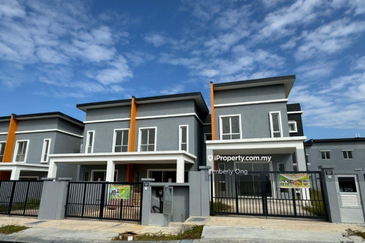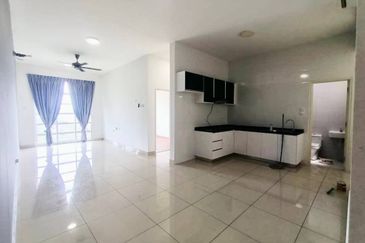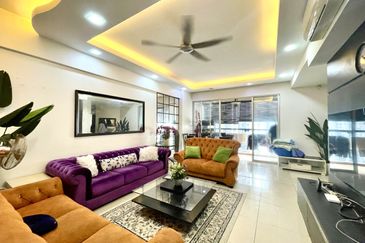
IN the 20th century, it was not unusual for the Seine to catch fire, thanks to the level of industrial pollutants in the river. Historically, the Seine has been many things — a means of transport, a source of drinking water and irrigation, a place to do the washing and even an “open sewer”, as described by more than one commentator.
The Seine is the lifeblood of Paris, as inextricably bound to its identity as the Eiffel Tower. Paris was built around the Seine and, even today, the city’s evolution and culture can be seen from its banks.
The banks of the Seine are a World Heritage site listed by Unesco, not only for the river’s significance to Paris but also the architectural masterpieces along its borders. From the viewing deck of the Eiffel Tower, a bird’s-eye view provides a perspective of how intimately the city embraces the river. For the visitor, this provides the bonus of viewing some of the best sights of the city, not travelling by bus or rail, but on the river.
The Parisian summer is a special time; the light sparkles off the water, and Parisians are disposed to sunbathe on the man-made sandy beaches created every summer on the banks of the river, soaking in the sun. The city of romance is never more romantic than in summer, when the days are long, the weather is warm and Paris is at its best.
The Seine runs a lovely green colour and is odour-free — something that could not always be said at an earlier age. Standing on one of the many bridges that span the river, you notice riparian life is endlessly engaging, with barges and boats on the green waters and people on its banks having a stroll or just watching life sail by.

Conveniently, most of the great sights of Paris are within walking distance of the Seine, a fact not lost on tourist boat operators. The Batobus uses the concept of a hop-on, hop-off bus, except that the “bus” is a glass-roofed, wooden-decked boat running a loop circuit with predetermined stops at the tourist spots. It is a wonderful way to see the major sights of the city.
The Eiffel Tower merits its own stop, with the others being the Musée d’Orsay, St-Germain-des-Prés, Notre Dame, Jardin des Plantes, Hôtel de Ville, the Louvre and the Champs-Élysées.
With the river as a guide, it is possible to walk between stops, but the boat provides a wind-in-your-hair experience on the Seine, free from the tyranny of vehicular traffic. The Batobus experience is such that a visitor can disembark at any stop, spend as much time as needed and return to the stop to catch the next boat, which plies the river on a regular basis.
Most of the stops feature famous landmarks, but the one at St-Germain-des-Prés provides an opportunity to visit one of Paris’ charming old neighbourhoods, with many footnotes along the way. There are many small art shops and schools, and wandering the small alleys might bring you to Café Les Deux Magots, a typical Parisian café with an outsize reputation. It is where literary and artistic greats such as James Joyce, Ernest Hemingway and Pablo Picasso might once have traded barbs with fellow diners, shared a carafe of wine and bitten into a crusty croissant.
Equally illustrious is the next-door Café de Flore, a little more discreet and subdued, but with no less a famous clientele of the intelligentsia in the 1950s. A short stroll away is the square in front of the St Sulpice Church, unremarkable in the hierarchy of grand churches in the city, but it is mentioned in Dan Brown’s bestseller, The Da Vinci Code.

I wandered inside and the haunting notes of the massive organ floated downwards, levitating me in spirit as I headed towards the apse of the church. Splinters of summer sunlight speared the gloomy interior, their golden light illuminating the cavernous nave and the arched ceiling.
The neighbourhood is not all about buildings, because there is the Jardin du Luxembourg, one of the largest green spaces in Paris. Over 400 years old and a place of trees, lawns and dappled light from foliage in the heat of summer, the gardens offer a sudden release from the grip of concrete. It is a place of light, air and the smell of fresh grass, where Parisians come for a brief respite from the city.
The Notre Dame stop on the Seine brings the visitor to one of Paris’ best-loved icons, the Notre Dame Cathedral, or Church of Our Lady. It is one of the finest examples of Gothic architecture, as well known for its protruding stone gargoyles with scowling faces and flying buttresses as the setting for Victor Hugo’s classic, The Hunchback of Notre Dame. All distances in France are measured from a marker, the Kilometer Zero, set in the courtyard of the cathedral. On a summer’s day, the queues to enter the cathedral stretch out into the courtyard; but no matter, it is glorious weather to be outside.


A short walk from Notre Dame, hidden within the inner courtyard of the building known as the Concierge, is the exquisite Sainte-Chapelle, a chapel built in the 13th century to house the holy relics of Christ. Considered an architectural jewel, the building is small, with the painstaking details of early Gothic architecture. Within, soaring columns and stunning stained glass windows, many of them original, provide a sense of the ethereal. The interplay of filtered light and the noble architecture conspire to induce visitors to speak in hushed, reverential tones.
A few stops down the river, you find the grandeur and sheer bling of the Champs-Élysées, one of the most glamorous streets in the world. Even from a distance, the massive structure of the Arc de Triomphe dominates the view. The Champs-Élysées provides for some urban strutting, for it is a place to see and be seen, thus the red rental Ferrari convertibles available for a quick but expensive spin around the block, the outdoor cafés where visitors feel compelled to have a cup of overpriced coffee, and that temple of female devotees the world over, the Louis Vuitton flagship shop, with its gilt lettering and queue of twittering female visitors outside.

Up close, the Arc de Triomphe is overpowering, with its larger-than-life relief sculptures of heroic youth in triumphant postures, its remembrance of warriors past, and the sobering Tomb of the Unknown Soldier with its eternal flame. The structure is so massive that it supposedly settles a little into the earth every year.
Paris has more than its fair share of fabulous monuments and grand architectures dripping with history. One of these, within walking distance or a stop downriver by the river bus, is the Place de la Concorde, a cobbled square beside the river with a massive, hieroglyph-inscribed gilt-topped obelisk, a gift from Egypt in the 19th century. It was in this square that Marie Antoinette, Louis XVI, Maximilien Robespierre and other nobles lost their heads to the guillotine during the French Revolution. On this summer’s day, the fountains provide cool relief for the many visitors from around the world, revelling in the glamour of the location. For the peckish, the world-famous Maxim’s restaurant is just around the corner.

There is no need to go down to the Seine again, for the Tuileries Garden flows smoothly from the Place de la Concorde, a green breathing space of flower beds, neat lawns, trimmed shrubs and trees. There are sculptures scattered in quiet corners of the gardens, and the small Musée de l’Orangerie, the permanent home of Monet’s luminous Water Lillies, which are housed in their own oval-shaped compartments.
One of the most famous art museums in the world, the Louvre, is at the far end of the gardens. The milling crowds, the glass pyramid of IM Pei in the square and the classic architecture of the sprawling building herald an adventure for the art lover, for here are some of the world’s best-known pieces of art. Nowadays, modern technology in the form of a location-aware tablet, and headphones helps navigate the vast maze of the museum, but a single day barely scratches the surface for the art lover, for everything from the Mona Lisa, the Venus de Milo, Winged Victory and lesser-known but no less striking pieces of art and history vie for attention.

Across from the Louvre and the sparkle of the Seine is the Musée d’Orsay, a one-time railway station, now a museum smaller and less intimidating than the Louvre, housing some of the best-loved Impressionist paintings by Van Gogh, Monet, Manet, Degas, Renoir and Cezanne.
In 2009, for the first time in almost a century, Atlantic salmon swam upriver in the Seine, a sign of its rejuvenation that had long been abused. In the evenings, a river trip in Paris is a magical thing, for which tourists pay top dollar, hoisting their champagne glasses to the setting sun. The architectural landmarks of Paris stand out in silhouette and sunlight dazzles like scattered diamonds on the surface of the Seine, pulsing on through history, a connection between Paris and its long and not-always glorious past.
Lee Yu Kit visited Paris at the height of a hot summer.
This article first appeared in Options, a pullout of The Edge Malaysia Weekly, on Sept 12, 2016. Subscribe here for your personal copy.
TOP PICKS BY EDGEPROP

HIJAYU 2 - RESORT HOMES
Seremban, Negeri Sembilan

Bandar Springhill
Port Dickson, Negeri Sembilan

SuriaMas, Taman Sri Subang
Bandar Sunway, Selangor

Dedaun Hijau (Greenfield Regency)
Tampoi, Johor





















